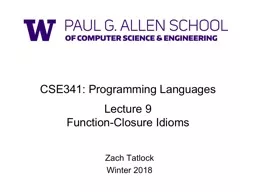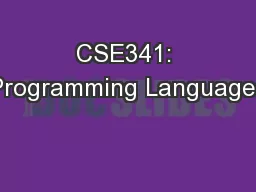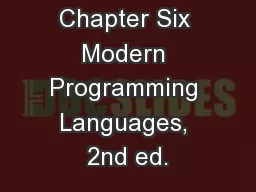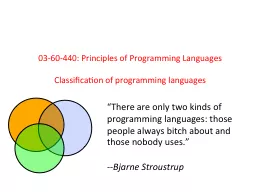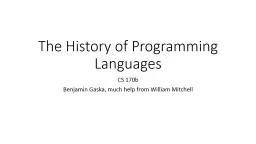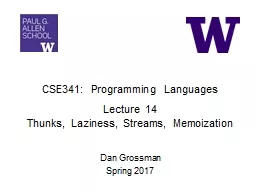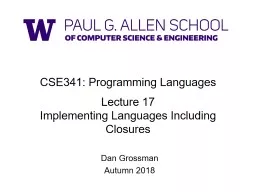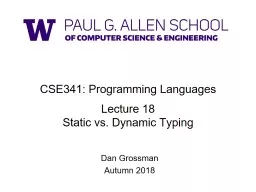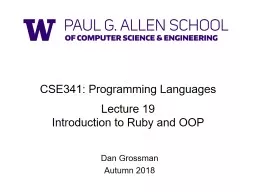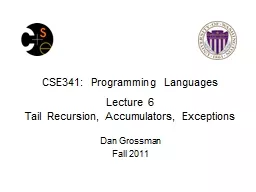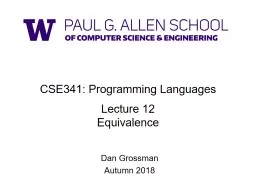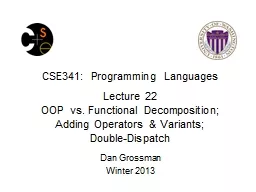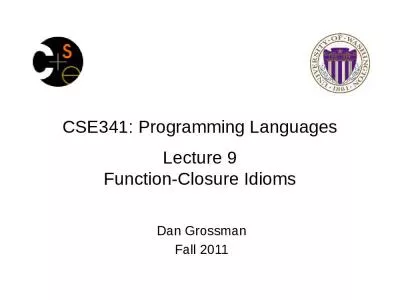PPT-CSE341: Programming Languages
Author : jane-oiler | Published Date : 2018-09-30
Lecture 9 FunctionClosure Idioms Zach Tatlock Winter 2018 More idioms We know the rule for lexical scope and function closures Now what is it good for A partial
Presentation Embed Code
Download Presentation
Download Presentation The PPT/PDF document "CSE341: Programming Languages" is the property of its rightful owner. Permission is granted to download and print the materials on this website for personal, non-commercial use only, and to display it on your personal computer provided you do not modify the materials and that you retain all copyright notices contained in the materials. By downloading content from our website, you accept the terms of this agreement.
CSE341: Programming Languages: Transcript
Download Rules Of Document
"CSE341: Programming Languages"The content belongs to its owner. You may download and print it for personal use, without modification, and keep all copyright notices. By downloading, you agree to these terms.
Related Documents

